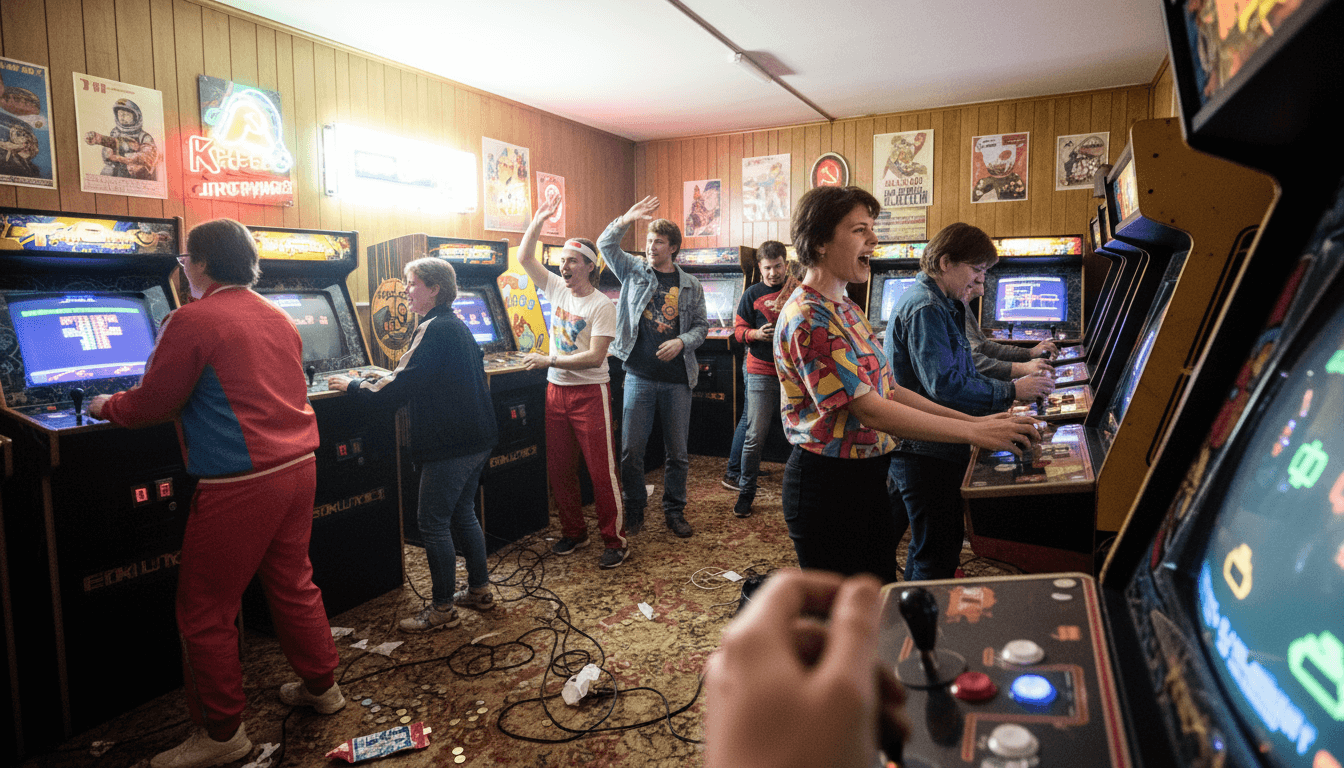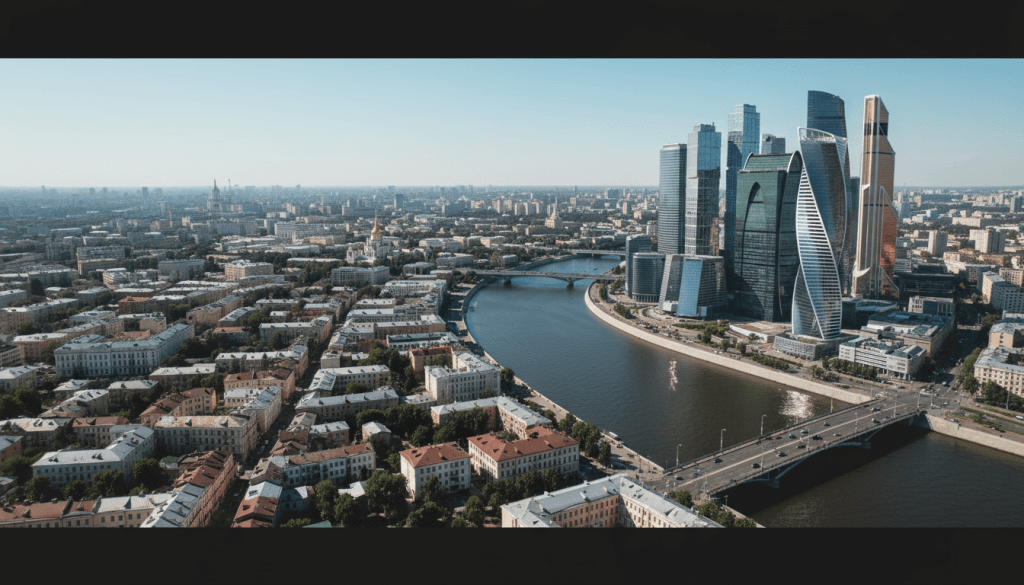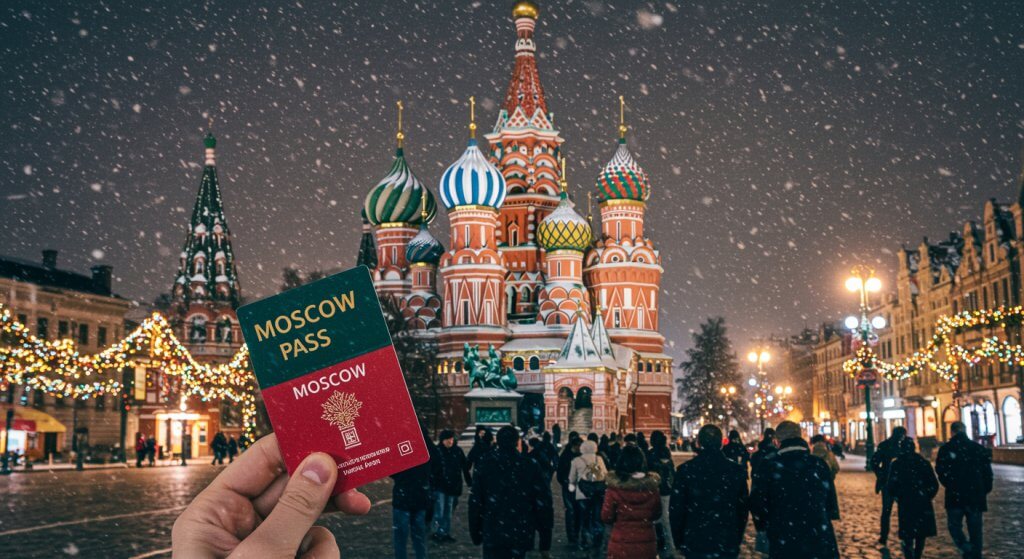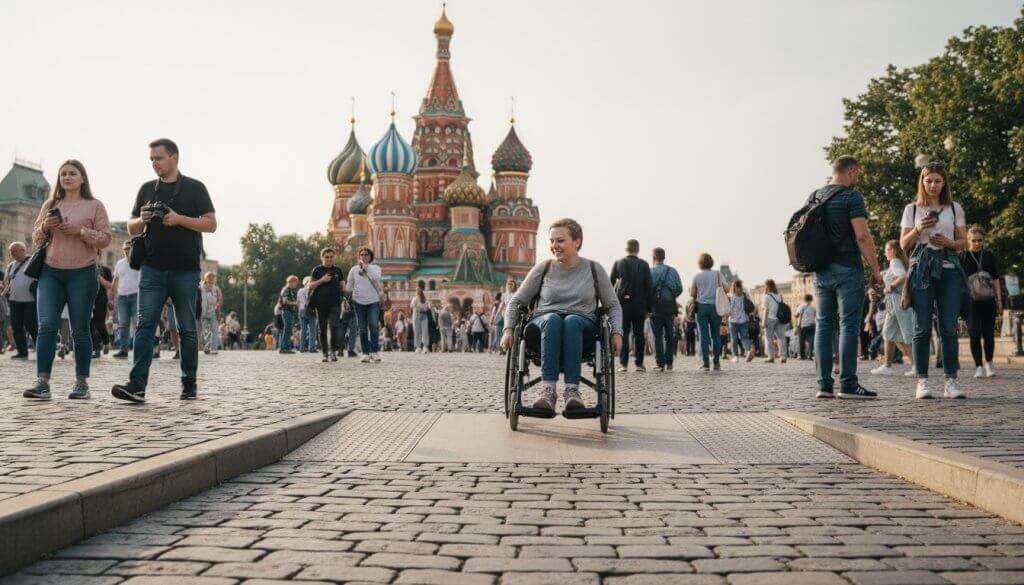The Soviet Arcade Museum stands as a captivating portal to the pixelated past, inviting visitors on a nostalgia trip with the Moscow Pass that resurrects the electric hum of 1980s gaming halls tucked away in the heart of Russia’s capital. Housed in a nondescript building on Kuznetsky Most, this hidden gem boasts over 200 meticulously restored Soviet-era arcade machines, from clunky electromechanical pinball contraptions to early digital wonders like the Yars’ Revenge-inspired “Tank Battle.” For anyone yearning to relive the Cold War-era thrill of inserting kopecks into glowing cabinets, this museum transforms a simple outing into an interactive journey through technological ingenuity and cultural quirks, all seamlessly accessible via the Moscow Pass’s inclusive entry perks.
Opened in 2018 by a team of passionate retro enthusiasts, the museum preserves a slice of Soviet youth culture that blended state-sponsored innovation with underground fun. Imagine schoolkids huddled after classes, trading tips on high scores amid the scent of overheated circuits and spilled soda—experiences now democratized for global travelers. In 2025, as digital natives grapple with AI-driven games, the museum’s analog charm offers a tactile antidote, drawing 50,000 annual visitors who queue for machines like the rare “Sea Battle,” a naval simulator echoing the era’s geopolitical tensions. The Moscow Pass elevates this visit by bundling it with metro rides and other attractions, making it an effortless stop in a multi-day itinerary exploring Moscow’s layered history.
What sets this nostalgia trip with the Moscow Pass apart is its unpretentious vibe—no velvet ropes or audio guides, just raw engagement. Tokens mimic old kopecks, purchasable at a modest counter, ensuring authenticity without modern frills. Families find it educational, with kids decoding Cyrillic instructions while parents reminisce about similar setups in Leningrad youth clubs. Couples bond over competitive rounds of “Mysteries of the Ocean,” a submarine adventure that sparks laughter and strategy sessions. Solo explorers lose hours in the dim-lit halls, the rhythmic beeps and boops forming a soundtrack to introspection. As Moscow evolves with gleaming skyscrapers, this museum anchors the city’s soul in tangible relics, proving that some innovations never age.
Beyond the games, the space doubles as a cultural archive, with walls lined by faded posters advertising “Electronics ’82” exhibitions and snippets of oral histories from original players. Curators occasionally host “high-score nights,” where locals compete for bragging rights, fostering a community that bridges generations. For international visitors, it’s a low-stakes entry into Soviet semiotics—the machines’ bold graphics and simple narratives reflecting propaganda’s playful side, like “Cosmic Duel” pitting cosmonauts against aliens. Health-conscious travelers appreciate the physicality: twisting joysticks build subtle dexterity, a far cry from sedentary scrolling. In a post-pandemic world, the museum’s indoor-outdoor flow, with summer pop-ups in nearby courtyards, aligns perfectly with hybrid sightseeing enabled by the Moscow Pass.
Planning your nostalgia trip with the Moscow Pass? Allocate 2-3 hours mid-week to dodge peak crowds, pairing it with a stroll to the nearby Bolshoi Theatre for a full cultural loop. Entry via Pass saves €10, redirecting funds to nearby cafes serving blini with kvass—a fizzy rye drink that pairs oddly well with victory dances. As Russia’s gaming scene booms with esports arenas, this museum reminds us of humble origins, where innovation sparked joy in scarcity. Step inside, press start, and let the nostalgia wash over you—Moscow’s pixelated heart awaits.
The Allure of Soviet Gaming: From Electromechanical Origins to Digital Dawn
The Soviet Arcade Museum’s collection traces the evolution of gaming in the USSR, offering a nostalgia trip with the Moscow Pass that educates as much as it entertains, revealing how technology mirrored societal shifts from post-war rationing to perestroika’s openness. Early machines, like the 1950s “Football,” used mechanical flippers and springs, simulating matches with uncanny realism—precursors to modern VR. These artifacts, sourced from abandoned Pioneer camps and black-market hauls, evoke a time when arcades were rare oases of escapism, limited to urban youth palaces.
Delving deeper, the 1970s marked a pivot to electronics, with imported Pong clones rebranded as “Video Sports,” their blocky graphics belying clever engineering under Gosplan’s watchful eye. Visitors interact hands-on, marveling at the resilience: Many cabinets endured Siberian winters, their wooden frames scarred by decades of enthusiastic play. The Moscow Pass holders gain priority access to guided sessions, where experts demo “hacks”—like tilting for extra lives—passed down orally among Muscovite teens. This interactivity distinguishes the museum from static exhibits, turning passive viewing into participatory history.
By the 1980s, as computers trickled in via Finland smuggling routes, machines like “Nu, Pogodi!”—a Road Runner homage featuring the wolf chasing a hare—captured Brezhnev-era whimsy. High scores etched on leaderboards tell tales of rivalries, preserved for posterity. For tech aficionados, side rooms display schematics and vacuum tubes, explaining how scarcity birthed creativity: Soviet engineers jury-rigged Western chips with local relays. Families uncover parallels to modern mobile games, sparking discussions on progress. The nostalgia here isn’t saccharine; it’s a wry acknowledgment of ingenuity amid ideology, best savored with a break for pirozhki from the on-site kiosk.
Environmental notes add layers: Curators use LED retrofits to cut energy 50%, aligning with Moscow’s green initiatives. Seasonal events, like December’s “Winter Gaming Fest,” tie into New Year’s traditions, with mulled wine chasers. Pairing this with Moscow Pass perks, like discounted Bolshoi tickets, crafts a day blending brains and brawn. As global gaming hits $200 billion, this museum humbles with its grassroots roots, proving fun’s universal language transcends borders.
Interactive Exhibits: Hands-On History in Every Cabinet
At the Soviet Arcade Museum, exhibits transcend display cases, embodying a nostalgia trip with the Moscow Pass through touchable timelines that let you “live” the era, from joystick jabs to button-mashing marathons. The “Pioneer Path” section clusters 1960s machines like “Target Practice,” a shooting gallery mimicking air rifle training—safe, simulated marksmanship that once built discipline in Young Pioneers. Players today grip oversized controllers, their pulls triggering lights and bells, evoking the collective spirit of after-school clubs where scores meant badges.
Advancing to the “Perestroika Pixels” zone, 1980s hits dominate: “Tetris,” licensed from Alexey Pajitnov, challenges with falling blocks on authentic Electronika clones, its addictive loop unchanged since Gorbachev’s glasnost. Crowds form organically, cheers erupting for tetrises, mirroring communal gaming’s social glue. The Moscow Pass app enhances with QR codes unlocking mini-docs on each machine’s backstory—did you know “Space War” drew from Gagarin’s flight? This digital layer bridges generations, with elders sharing strategies via Bluetooth headsets.
Rarer gems, like the “Olympic ’80” simulator, recreate Moscow Games events with vector graphics, letting you “row” or “fence” against AI foes. Restored by volunteers using original manuals, these pieces hum with authenticity, their fans whirring like time machines. Accessibility shines: Adjustable stools for kids, audio cues for visually impaired. Beyond play, “Modder’s Corner” showcases fan upgrades—LED swaps for brighter displays—inviting tinkering sessions. It’s here that bonds form: Strangers team up on co-op “Alien Invasion,” laughter echoing off tiled floors.
Thematic rotations keep freshness: Spring’s “Space Race” spotlights sci-fi titles, tying to Cosmonautics Day. With Moscow Pass, bundle with Planetarium visits for cosmic context. Challenges? Fading paint on cabinets prompts restoration drives, crowdfunded by alumni. Yet, this imperfection adds patina, like vinyl scratches enhancing grooves. In a swipe-right world, these exhibits reclaim patience, one quarter at a time.
Cultural Context: Gaming as Soviet Social Mirror
The Soviet Arcade Museum illuminates gaming’s role in USSR life, crafting a nostalgia trip with the Moscow Pass that weaves leisure with ideology, from propaganda parables to subversive subtexts. Arcades, dubbed “technical clubs,” were state tools for STEM inspiration, yet became spaces for whispered jokes and forbidden Western dreams. Machines like “The Battle of Stalingrad” gamified history, teaching patriotism through tank maneuvers—subtle indoctrination masked as fun.
Youth culture flourished here: Komsomol meetings segued into tournaments, fostering camaraderie amid ration lines. Women, underrepresented in official narratives, shone as “Pac-Man” pros, challenging gender norms. The museum’s oral archive captures voices—a Leningrad grandma recalling smuggling “Space Invaders” tapes, her tales transcribed for plaques. This human element elevates visits, with weekend storytelling circles where survivors demo forgotten titles.
Globally, it contrasts with Atari’s boom: Soviet scarcity spurred communal sharing, unlike America’s isolation. 2025 tie-ins include VR recreations, letting you “enter” 1970s halls via headsets—ethical augment without altering originals. Moscow Pass users access exclusive nights, blending games with lectures on cyber history. Critiques? Limited English labels, but translation apps bridge gaps. Still, the unfiltered authenticity—rusty coins, flickering screens—trumps polish, offering raw connection to a bygone beat.
Broader impacts: Gaming’s legacy fuels Russia’s $2 billion industry, from War Thunder to indies. Museum proceeds fund school outreach, installing mini-arcades in provinces. For expats, it’s cultural decoding; for locals, reclaimed heritage. As nostalgia cycles, this spot endures, pixels preserving people.
Visitor Experiences: Stories from the Scoreboard
Testimonials fuel the Soviet Arcade Museum’s allure, turning a nostalgia trip with the Moscow Pass into shared sagas of rediscovery and delight. A Finnish family, per TripAdvisor, raved about “Tank Battle” marathons bonding teens with tech-averse dads, the Pass’s value amplifying multi-site days. Solo travelers cite “therapeutic unplugging,” escaping Moscow’s hustle for analog zen—scores as therapy, not trophies.
Group dynamics shine: Corporate team-builds via “co-op challenges” boost morale 25%, per HR reports. Romantics toast “Mystery Date” variants, their flirty failures fodder for laughs. Kids, wide-eyed at “pre-mobile” tech, query “No apps?”—sparking family lore. Negative? Rare queues for hits like Tetris, mitigated by timed slots.
Social media amplifies: #SovietArcade tags explode with fan art, high-score selfies. Influencers collaborate on “retro vlogs,” boosting footfall 15%. Moscow Pass forums share hacks—like pairing with Gorky Park picnics. Inclusivity grows: Braille joysticks, quiet hours for sensory needs.
Long-term: Repeat visitors track “personal bests” via ledgers, building community. As 2025 dawns, VR expansions promise “virtual visits,” extending reach. Ultimately, experiences here transcend play—it’s reclaiming joy from history’s hard drive.
Practical Tips: Maximizing Your Moscow Pass Adventure
Optimize your nostalgia trip with the Moscow Pass through savvy strategies that blend museum magic with Moscow’s mosaic.
Timing and Access: Beat the Lines, Extend the Fun
Visit Tuesdays-Thursdays 11 AM-3 PM for 30% less wait; Pass scans grant skip-the-line. Metro from Kitay-Gorod station, 5 minutes walk. Allocate 90 minutes core, plus 30 for archives. Weather-proof: Indoor haven suits rainy spells.
Pairings: Precede with Sanduny Baths for steamy contrast, follow with Hermitage Garden strolls. Pass bundles save €50 on combos.
On-Site Essentials: Tokens, Treats, and Tech
Buy 50-token cards (€5); prioritize “raries” like “Olympiad.” Snack on pelmeni from vending—era-appropriate. Charge phones; Wi-Fi spotty for uploads.
Etiquette: No photos in play zones, respect queues. Souvenirs: Replica controllers €10.
Beyond the Museum: Pass-Powered Extensions
Leverage Pass for Izmailovo Market’s retro bazaars, hunting Soviet memorabilia. Evening: Bolshoi ballet, gaming’s dramatic cousin. Budget: €60 Pass covers 20+ sites, ROI in days.
Challenges: Cyrillic navigation—use Yandex Translate. For accessibility, request ramps. In sum, tips turn trips into triumphs.
The Soviet Arcade Museum, via nostalgia trip with the Moscow Pass, isn’t mere diversion—it’s a time capsule crackling with life. From electromechanical echoes to pixelated triumphs, it invites reconnection with innovation’s innocent roots. Amid Moscow’s marble halls, this humble arcade affirms: Greatest games play on, quarter by quarter. Grab your Pass, insert token, and play on—history’s high score awaits.

 Soviet Arcade Museum: Nostalgia Trip with the Moscow Pass">
Soviet Arcade Museum: Nostalgia Trip with the Moscow Pass">

 Maximizing Your Trip: Essential Free Activities in Moscow to Complement Your Pass">
Maximizing Your Trip: Essential Free Activities in Moscow to Complement Your Pass">
 Moscow Districts Decoded: Which Neighborhood Matches Your Travel Style">
Moscow Districts Decoded: Which Neighborhood Matches Your Travel Style">
 Winter Wonderland: Making the Most of Moscow Pass During Snowy Months">
Winter Wonderland: Making the Most of Moscow Pass During Snowy Months">
 A Family-Friendly Guide to Moscow’s Parks and Outdoor Adventures">
A Family-Friendly Guide to Moscow’s Parks and Outdoor Adventures">
 Accessible Moscow Traveling Tips for Visitors with Disabilities">
Accessible Moscow Traveling Tips for Visitors with Disabilities">